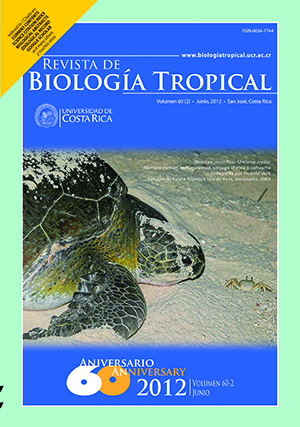Abstract
Fruit color and odor are the main features regulating the rate of fruit predation and dispersal. The aim of this study was to analyze the effect of odor and color on fruit predators and dispersers. The present study was conducted in a 30ha area of secondary forest in Southeastern Atlantic Brazil. This area was divided into two transects, in which four points were marked with a 30m distance from each other. Each sampling point contained a total of 30 artificial fruit which belong to six different treatment groups, with five artificial fruit per group. Each group was randomly placed on the ground and that artificial fruit was checked every seven days. For each group of five fruit, 5mL of essence (vanilla or pineapple) were placed, and no essence was used in the control group. Artificial fruit was made with green and red nontoxic modeling clay, as well as artificial essences (vanilla and pineapple). A total of 960 fruits were used. Predated fruit equaled 26.9% (258 units), from which the red/pineapple had the highest predation rate (81.9%), followed by red/vanilla (46.3%), while green/control fruits were not predated. Throughout the experiment, bitten fruit and pecked fruit equaled 58.3% and 41.7%, respectively. No significant differences were recorded (x2=7.57, df=5, p=0.182) between bitten and pecked fruit. Fruit color and odor are important in attracting predators and dispersers, which explains the high rate of predation of red/ vanilla and red/pineapple, and the absence of predated fruits in the green/control group. Regarding the potential disperser, there was no statistically significant difference between pecked fruit and bitten fruit. As a result, it should be taken into consideration that zoochory (mammalochory and ornithochory) is the most important dispersal; therefore, it should be concluded that birds are more attracted by color and mammals by odor.Comments

This work is licensed under a Creative Commons Attribution 4.0 International License.
Copyright (c) 2012 Revista de Biología Tropical
Downloads
Download data is not yet available.






